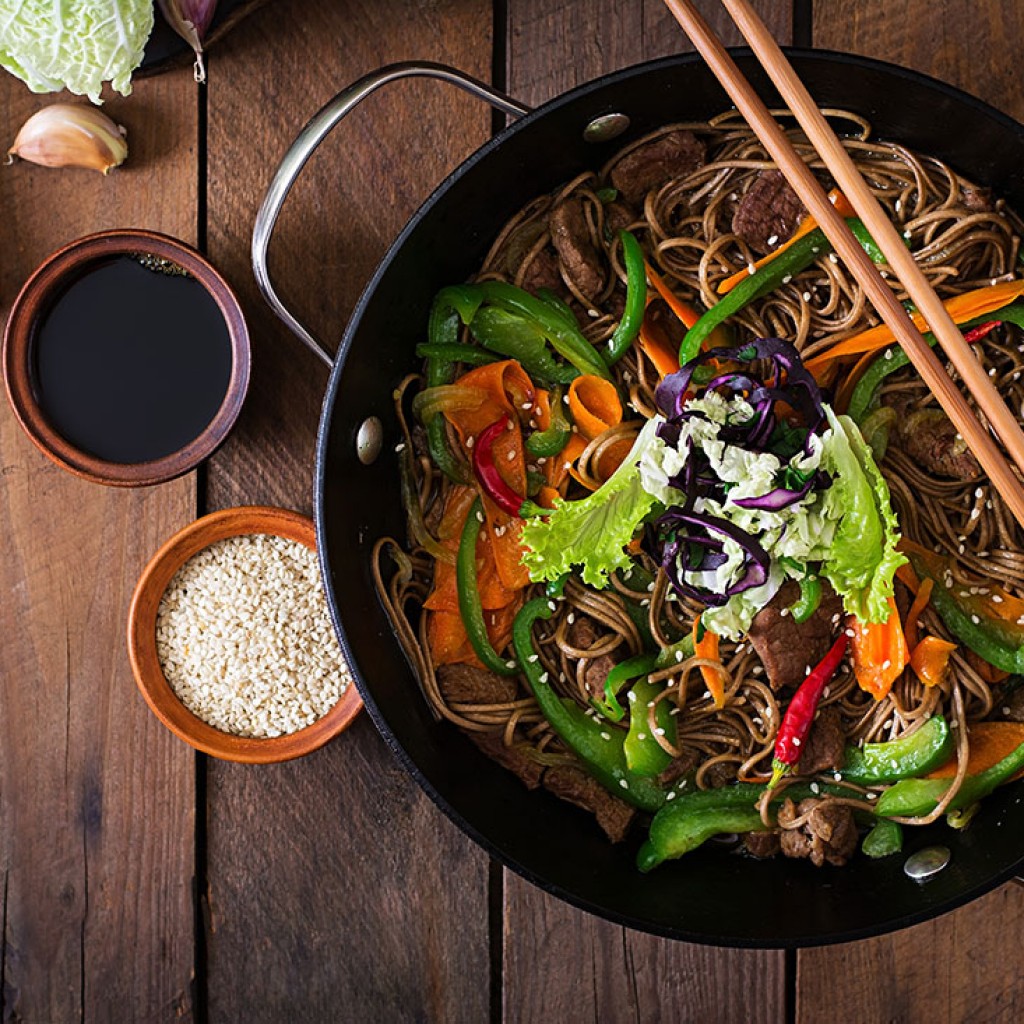Japanese meals involve finding a balance between flavours and beautiful presentation. There’s a lot to love in traditional Japanese cuisine, including its fresh, light and flavoursome qualities. You should finish a Japanese meal feeling nourished and satisfied, never over-stuffed. Not only is Japanese food a taste sensation, but its health benefits have been lauded the world over.
If we were to let traditional Japanese food be our medicine, perhaps we too could enjoy longer lives free from health worries. Japanese residents tend to enjoy longer lives without disabilities compared to Western world citizens, averaging around 4 or 5 years longer life expectancy than the average American, and tending to live up to age 75 without a major health complaint that hinders their quality of life.
If delectable eating that leaves you feeling and looking great sounds good to you, keep reading. We’ve put together some of the key feature of the traditional Japanese diet that keep their population in such good health. The best news is that you can incorporate them into your life without a drastic transition to subsisting solely on miso and rice. Simply being mindful about your meal and enjoying each mouthful means you will be eating more like the Japanese.
Rice, rice baby
The Japanese diet is built on a solid foundation of rice. In the Japanese language, the words for ‘meal’ and ‘rice’ are the same thing. At least a little bit of rice is served with practically every meal from breakfast, lunch to dinner. Rice is a complex carb, which helps you feel satisfied and reduces over-eating, as well as quelling sugar cravings (especially brown rice). Brown rice is exactly the same thing as white rice, it’s just a less processed version. It has more protein than its white counterpart and is a good source of heart-healthy fiber.
Add a bit of miso soup to your diet
There’s a true story about seaweed at Nagasaki Medical Centre, very close to the site of the nuclear explosion in 1945. The centre had only sacks of brown rice, miso and wakame seaweed to feed their staff and patients. Incredibly, the incidences of radiation poisoning in the team of nurses and physicians were non existent. Why? Miso has been found to protect against radiation, and is incredibly good for your gut health. The longer the ferment, the more medical benefits. You can enjoy a bowl of miso with breakfast, lunch and dinner in true Japanese style. Go for organic miso paste and locally grown Australian seaweeds.
Pickles with everything
Another staple of the traditional Japanese diet is a pickle. A salty pickle is served with most meals. Pickled and fermented foods are great for digestive health, and having a strong digestive system helps your body maintain good health in all other facets.
Eating seasonally
Japanese culture places huge emphasis on the importance of the seasons. The changing of weather is marked by a lot of festivals, events and traditions – and menus are no exception. Japanese cuisine never overwhelms the natural flavour of something with too much spice and strong sauces, which is why seasonal ingredients are so prized. When something is fresh, the natural flavour really stands out – there’s no need to get excessive with your flavours when you are eating seasonally.
Eating a diverse range of foods
In Japan, dietary guidelines recommend that people eat at least thirty different kinds of food each day.Your body absorbs nutrients, vitamins and minerals with much more ease when they come from foods instead of from pills or supplements. Eating lots of different things will ensure that you get a range of benefits and nutrients from different angles.
Fairly flesh free
While most Japanese restaurants tend to serve up a meat-heavy menu, this is to suit the Western sensibilities of their diners. Many Japanese people, especially older folk, will steer clear of meats (although eating meat is more popular with younger generations). If they do eat something like pork or beef, they will only go for some thin slices of choice, lean cuts. It’s been well-documented by the WHO that a meat heavy diet is synonymous with increased rates of chronic diseases, so it makes sense that the Japanese prefer fish and veggies over red meat.
Delicious daikon
Daikon are sometimes called white radishes in Western supermarkets. These long root vegetables are used medicinally as well as boiled, fried and added to soups. Daikon has been shown to be protective against cancer, aid red skin conditions like eczema, improve kidney functions, and are high in Vitamin A, C, E and B-6, potassium, magnesium, calcium, iron and fibre.
Tea, not coffee
Green tea is consumed a lot, especially by older Japanese people. High in flavonoids and antioxidants, this helps keep heart problems away and increases the immune system.
Japanese cuisine – healthy and delicious
Doesn’t all this sound so much better than gut-clogging bread and heavy meats and cheeses weighing you down? Simply by adding some rice to your diet and shopping for seasonal veggies you can eat more like a Japanese person, and enjoy all the associated health benefits.






 (11 votes, average: 4.64 out of 5)
(11 votes, average: 4.64 out of 5)